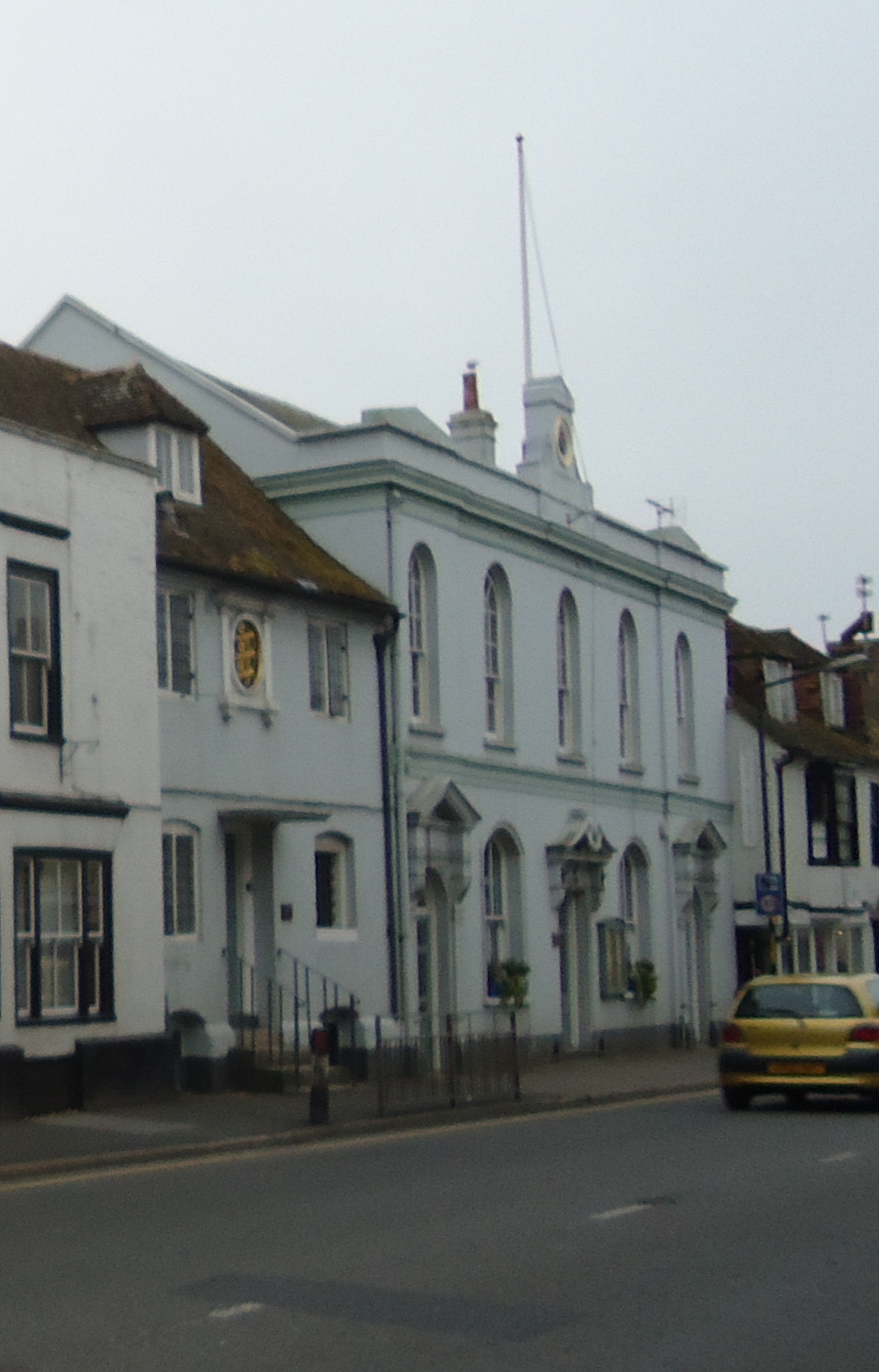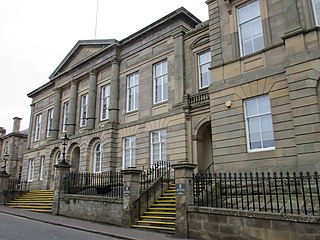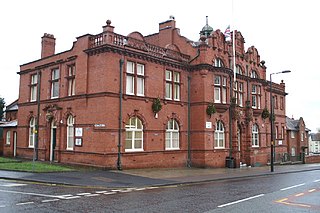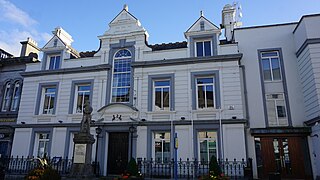
Corder House and Sydenham House are two, adjacent, Grade II listed buildings on Fawcett Street, in Sunderland, Tyne and Wear, England. Designed by Frank Caws in the Neo-Moorish style, they were constructed in brick from 1889–1891 by David and John Rankin with terracotta features by J. C. Edwards of Ruabon.

County Hall, formerly known as Dún Laoghaire Town Hall, and before that, Kingstown Town Hall, is a municipal facility in Marine Road, Dún Laoghaire in the county of Dún Laoghaire–Rathdown, Ireland.

Brighouse Town Hall is a former municipal building in Thornton Square, Brighouse, West Yorkshire, England. The town hall, which was the headquarters of Brighouse Borough Council, is a Grade II listed building.

Sandown Town Hall is a municipal building in Grafton Street, Sandown, Isle of Wight, England. The structure, which was the meeting place of Sandown Urban District Council, is a Grade II listed building.

New Romney Town Hall is a municipal structure in the High Street, New Romney, Kent, England. The structure, which is the meeting place of New Romney Town Council, is a Grade II listed building.

Poole Guildhall is a municipal building in Market Street, Poole, Dorset, England. The guildhall, which is used as a register office and a venue for weddings and civil partnership ceremonies, is a Grade II* listed building.

The Old Town Hall is a building on Church Street in the market town of Poulton-le-Fylde in Lancashire, England. The building, which is located just beyond the northern end of Market Place, started life as a public house before becoming a municipal building and then reverting to use as a public house.

The Corn Exchange is a commercial building in King Street, Ipswich, Suffolk, England. The structure, which is currently used as a public events venue, is Grade II listed building.

The Town House is a municipal building in Union Street in Yeovil, Somerset, England. The building, which is the meeting place of Yeovil Town Council, is a Grade II listed building.

Hanley Town Hall is a municipal building in Albion Square in Hanley, Staffordshire, England. The building, which is used as the local register office, is a Grade II listed building.

Campbeltown Town Hall is a municipal structure in Main Street in Campbeltown, Argyll and Bute, Scotland. The structure, which is used as a community events venue, is a Category B listed building.

Gifford Town Hall is a municipal building in The Square, Gifford, East Lothian, Scotland. The structure, which is used as a community events venue, is a Category B listed building.

Lanark Sheriff Court is a judicial building in Hope Street, Lanark, South Lanarkshire, Scotland. The building, which continues to serve as the local courthouse, is a Category B listed building.

Hindley Town Hall, also known as Hindley Council Offices, is a municipal building in Cross Street, Hindley, Greater Manchester, England. The building is currently used by Wigan Metropolitan Borough Council for the delivery of local health and social care services.

Ince-in-Makerfield Town Hall, also known as Ince-in-Makerfield Council Offices, is a municipal building in Ince Green Lane, Ince-in-Makerfield, Greater Manchester, England. The building is currently used as a children's nursery.

The Corn Exchange is a commercial complex in the High Street, Rochester, Kent, England. The complex, which was commissioned as a corn exchange and is now used as an events venue, is a Grade I listed building.

The Corn Exchange is a commercial building in Market Street, Witney, Oxfordshire, England. The structure, which is used as a public events venue, is a Grade II listed building.

Wotton-under-Edge Town Hall is a municipal building in Market Street, Wotton-under-Edge, Gloucestershire, England. The structure, which operates as a community events venue, is a Grade II listed building.

The Corn Exchange is a commercial building in the Market Place, Arbroath, Angus, Scotland. The structure, which is now used as a public house, is a Category B listed building.

Clonmel Town Hall is a municipal building in Parnell Street, Clonmel, County Tipperary, Ireland. The building accommodated the offices of Clonmel Borough Council until 2014.





















